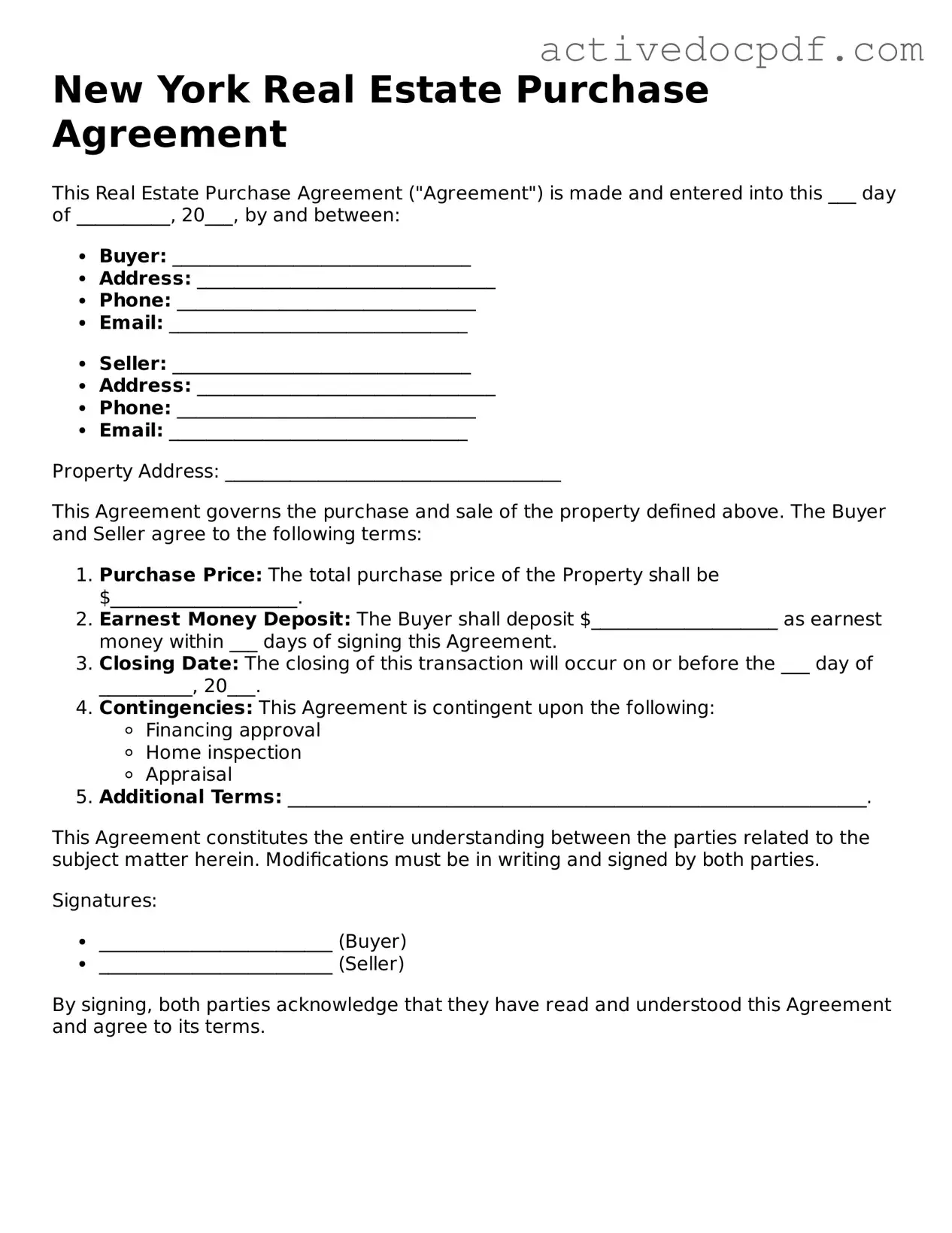What is a New York Real Estate Purchase Agreement?
A New York Real Estate Purchase Agreement is a legally binding document that outlines the terms and conditions of a real estate transaction between a buyer and a seller. This agreement details the property being sold, the purchase price, and any contingencies that must be met for the sale to proceed. It serves to protect the interests of both parties throughout the transaction process.
The agreement generally includes the following key components:
-
Identification of the buyer and seller
-
Description of the property, including its address and legal description
-
Purchase price and payment terms
-
Contingencies, such as financing or inspection requirements
-
Closing date and any conditions for closing
-
Disclosures regarding the property’s condition
Is the agreement required to be in writing?
Yes, under New York law, a real estate purchase agreement must be in writing to be enforceable. This requirement helps ensure that both parties have a clear understanding of the terms and conditions of the sale, reducing the potential for disputes later on.
What are contingencies, and why are they important?
Contingencies are specific conditions outlined in the agreement that must be satisfied for the sale to proceed. Common contingencies include:
-
Financing contingency: This allows the buyer to secure a mortgage before finalizing the purchase.
-
Inspection contingency: This gives the buyer the right to have the property inspected for any issues.
-
Appraisal contingency: This ensures that the property is appraised at or above the purchase price.
Including contingencies protects the buyer’s interests and provides an opportunity to back out of the agreement if certain conditions are not met.
What happens if either party wants to back out of the agreement?
If either party wishes to back out of the agreement, they must review the terms outlined in the contract. If the buyer or seller has not met the contingencies specified in the agreement, they may have grounds to withdraw without penalty. However, if one party tries to back out without valid reasons, they could face legal consequences or be required to compensate the other party.
Can the agreement be modified after it is signed?
Yes, the agreement can be modified after it is signed, but both parties must agree to the changes. Any modifications should be documented in writing and signed by both the buyer and seller to ensure clarity and enforceability. This helps prevent misunderstandings and protects the rights of both parties.
What is the role of an attorney in this process?
While it is not legally required to have an attorney for a real estate transaction in New York, having legal representation is highly recommended. An attorney can help review the agreement, ensure that all legal requirements are met, and provide guidance on any potential issues that may arise during the transaction. Their expertise can be invaluable in protecting your interests.
What should I do if I have questions about the agreement?
If you have questions about the New York Real Estate Purchase Agreement, consider reaching out to a qualified real estate attorney or a licensed real estate agent. They can provide clarity on specific terms, answer your concerns, and guide you through the process to ensure that you fully understand your rights and obligations.
